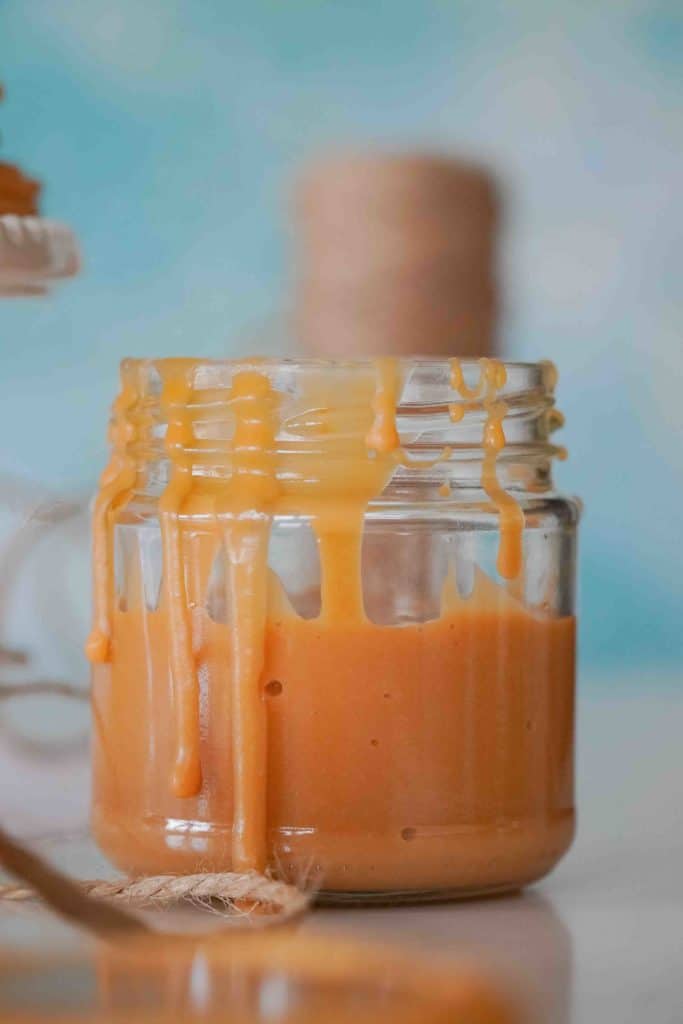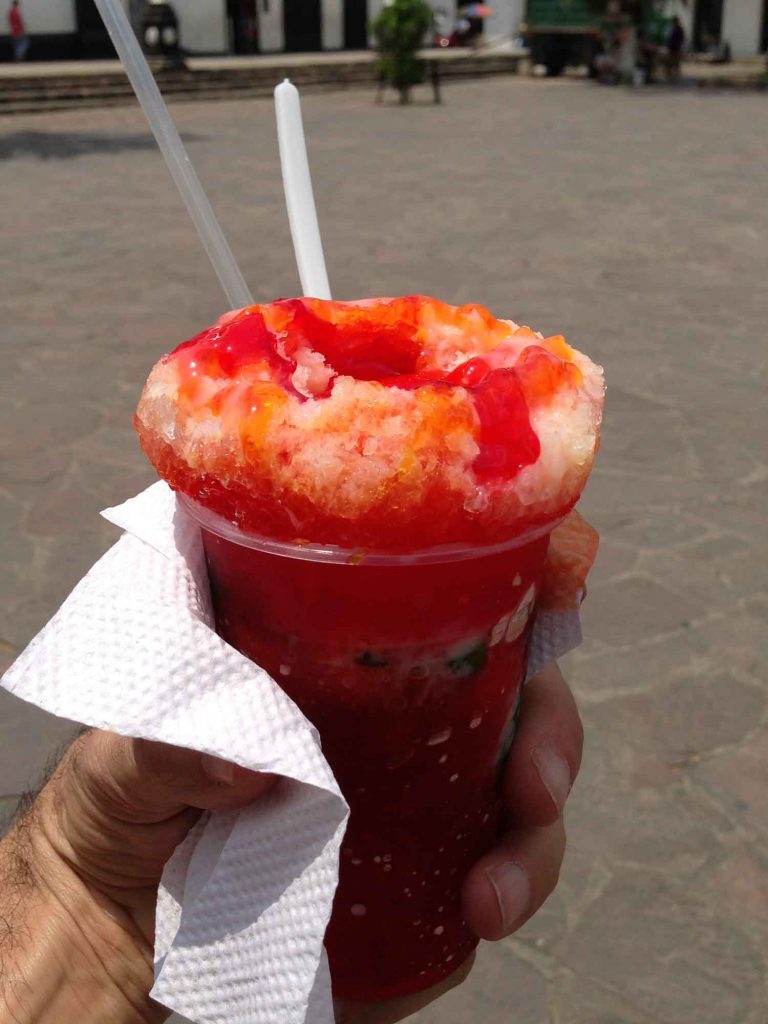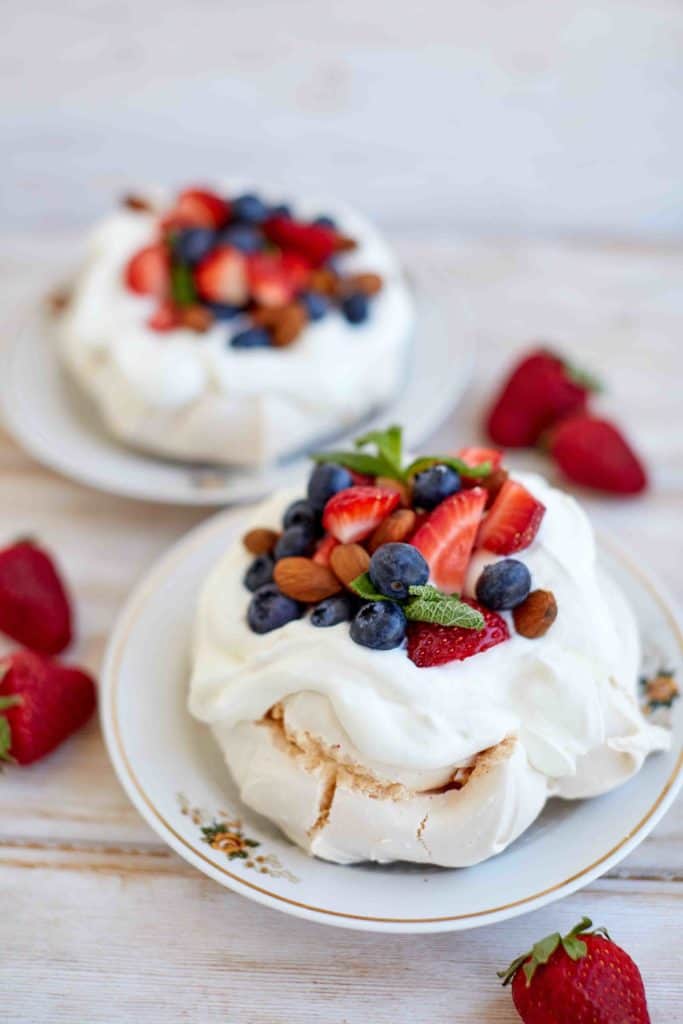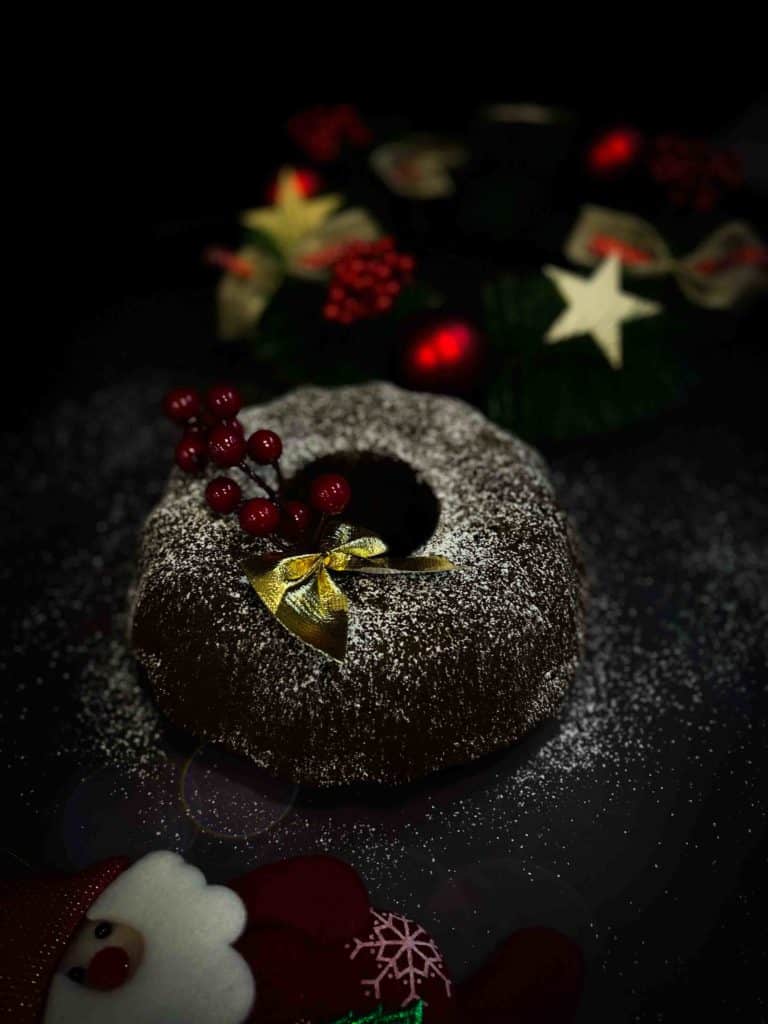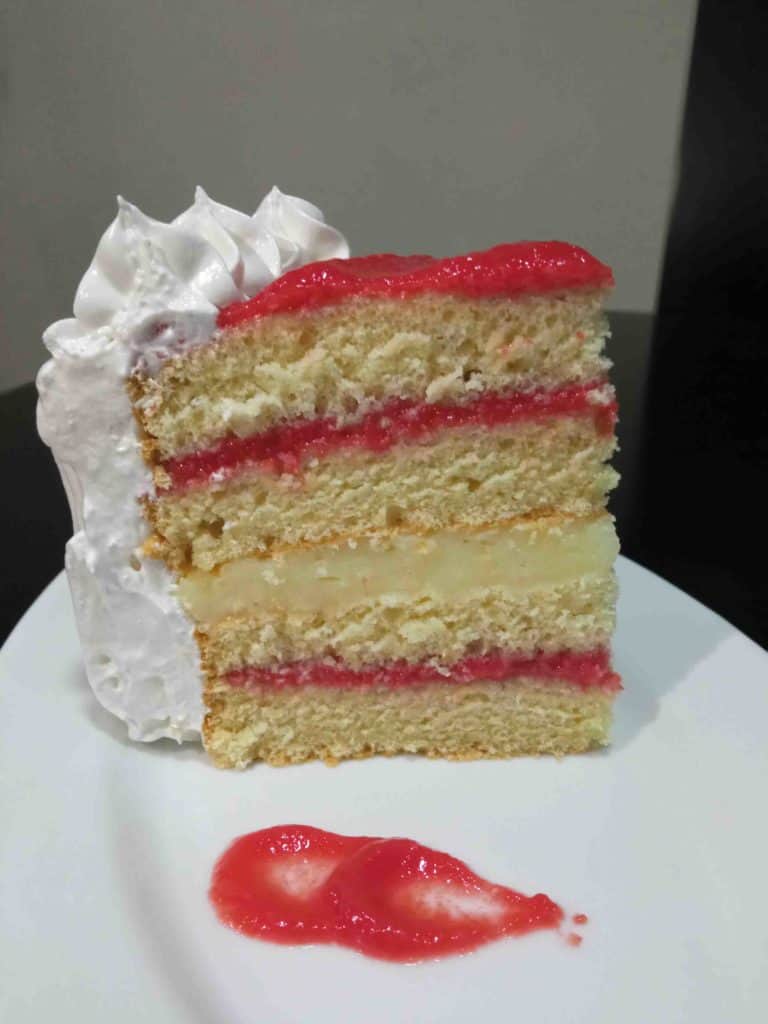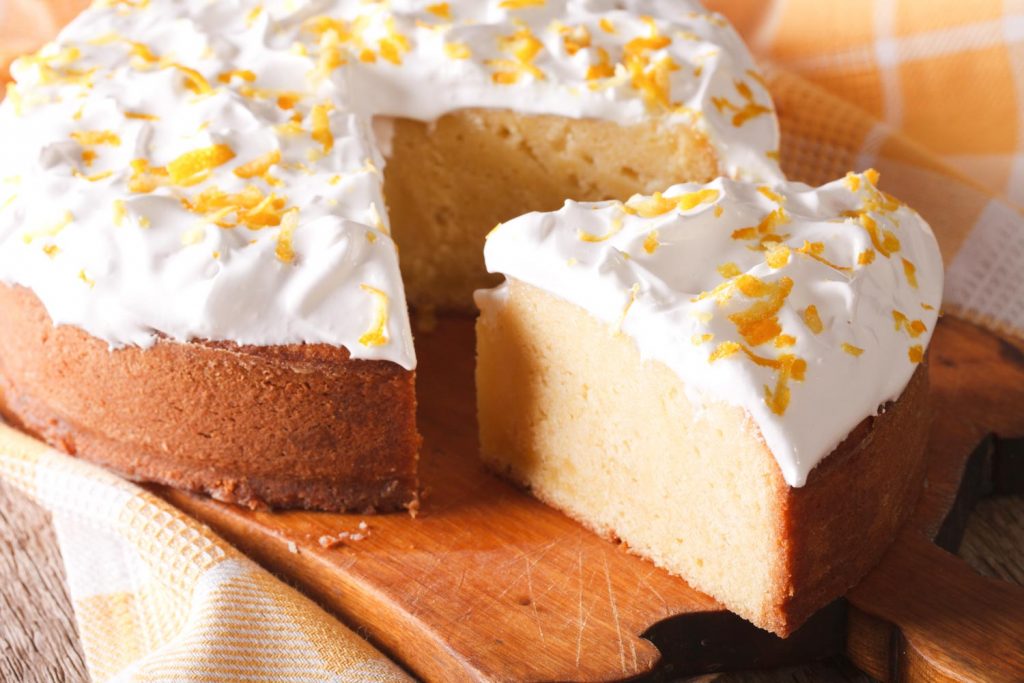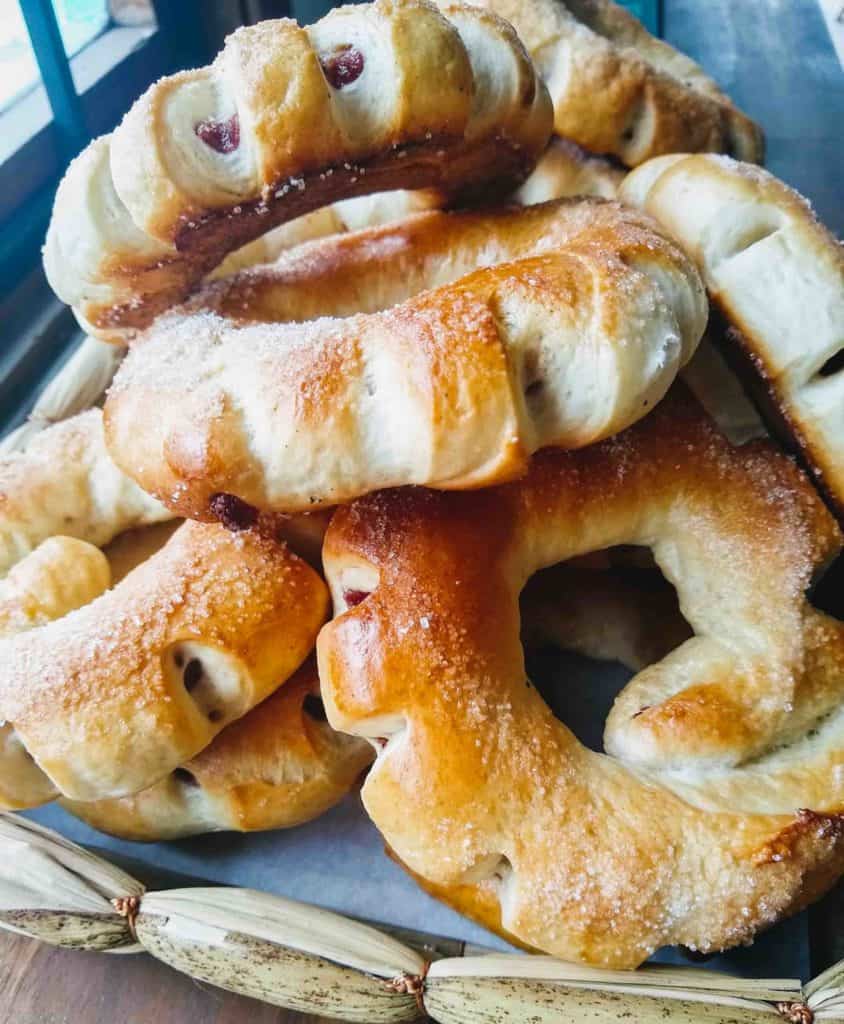Have a sweet tooth? These Colombian desserts make visiting this South American country a treat.
While I often pass on dessert Colombia has an amazing food culture – and desserts and sweet treats are no different here.
While there is much to be said about desserts from other countries from around the world such as Italy and France, desserts in Colombia are relatively unknown to the rest of the world.
Colombia has typical Latin American desserts and sweets you’ll see in other countries, but also many that are uniquely Colombian.
They are delicious and many of them of region-specific. But if you have a sweet tooth, they’re bound to give you a reason to travel more of Colombia.
Colombian Food Influences
Colombian cuisine has a rather interesting and eclectic history. The Spanish colonized Colombia and as a result, there is a strong Spanish influence in the cuisine.
There were also a large number of slaves that were brought into the country, mainly from Africa. As a result, there is also an African influence on the cuisine.
This Spanish African fusion is the further combined with a strong Indigenous cuisine influence to create an interesting combination that surprisingly works.
Furthermore, Colombian cuisine varies throughout the regions within the country and there is what we call a geographical influence.
The lower parts of the west coast lie within the Pacific Ocean while the northern stretches fall within the Caribbean Sea.
Traditional Colombian Food
The cuisine is therefore, largely influenced by the ocean and very much based on Caribbean flavors and fresh seafood.
In contrast to the coastal stretches, part of Colombia also falls within the Andes mountain range. It is here that the dishes are a lot heartier and packed full of bold flavors.
The coffee triangle also boasts its own unique dishes and the Antioquian cuisine is also packed with flavor, is incredibly filling, and hearty all at the same time.
. ‘Colombian Desserts
1. Arequipe
Arequipe is Colombia’s version of the Argentinian sweet treat, dulce de leche.
Although different in name, the base ingredients are essentially the same. Sugar and milk make up the predominant ingredients, while a dash of baking soda and salt are added, too.
A nice additional touch is to add in some cinnamon and vanilla seeds. While these aren’t entirely traditional, they definitely take it to the next level.
Arequipe is the prefect topping to ice cream, cookies, and cakes but it can be enjoyed just on its own – by the spoonful!
It’s also called manjar de leche in Ecuadorian desserts.
.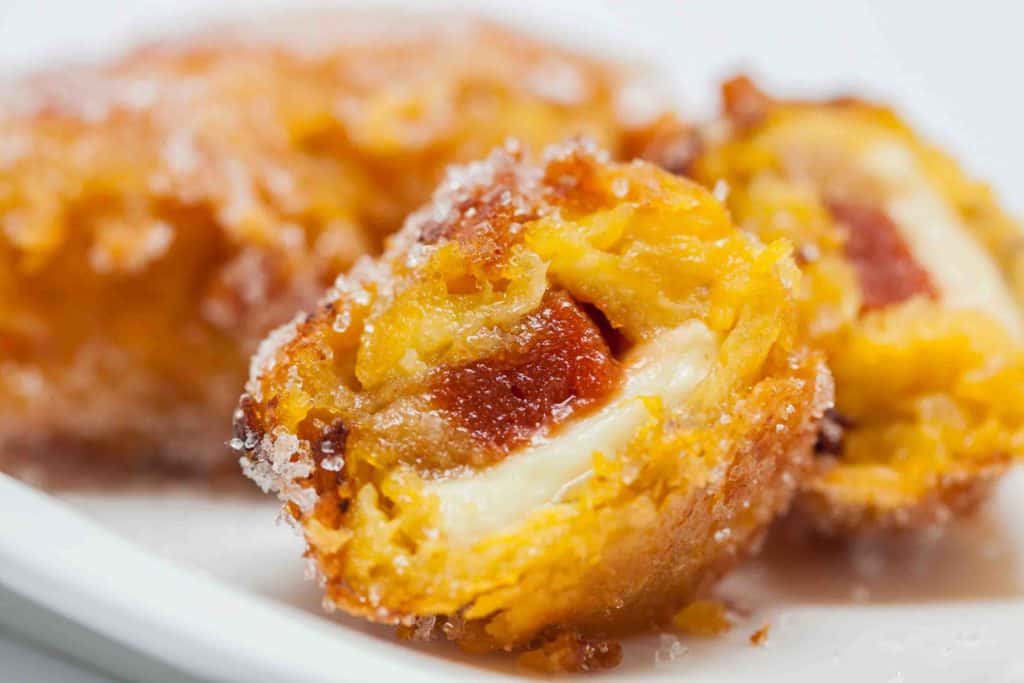
2. Aborrajados
First on the list of Colombian sweets are aborrajados – a crispy fritter made using ripe plantains.
The ripe plantains are cut into large pieces, flattened, and then fried – but wait, there’s more. They are then filled with cheese, battered, and then fried again until golden brown and crispy.
Aborrajados are the perfect on-the-go snack but also make for a great side dish to other main meals.
There are several different regional variations but the version from the Valle del Cauca region are some of the most delicious.
Guava paste is added to give a bit more sweetness that offsets the savory element of the cheese.
.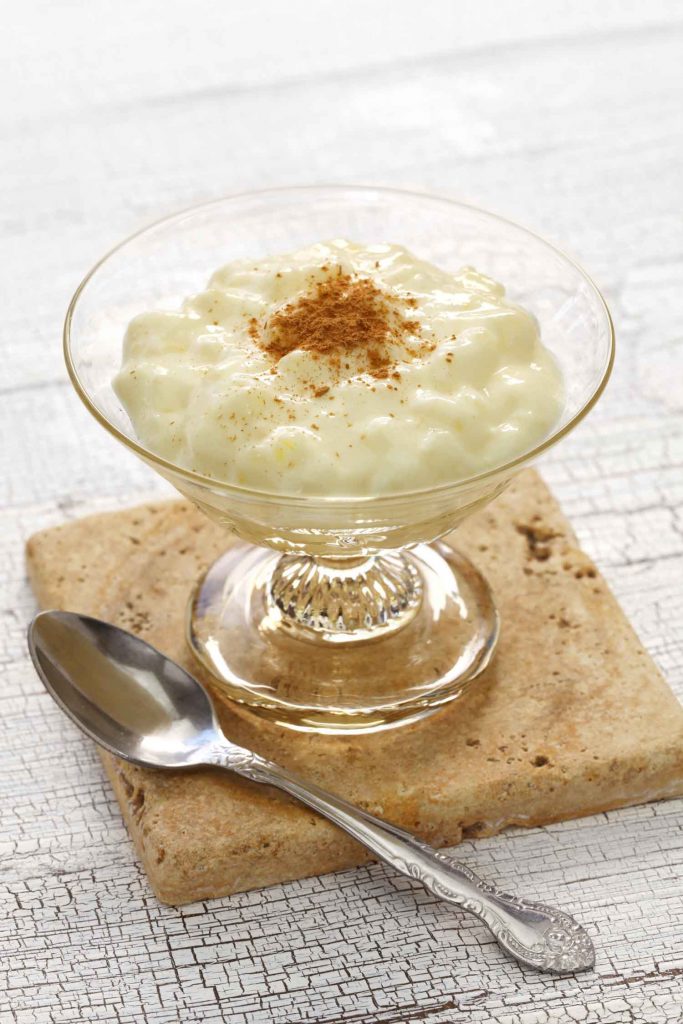
3. Arroz con Leche
Arroz con leche is the Colombian version of rice pudding. It is deliciously rich and creamy but is also relatively easy to make.
It’s not only one o the most popular Peruvian desserts but also one of the most popular Colombian desserts. It is also enjoyed equally hot as it is cold, and like many food items, is better the next day.
This rice-based dessert begins with, no other than, raw or pre-cooked rice. The rice is cooked in either water or milk and is then sweetened with condensed milk.
Finally, cinnamon and vanilla are added for a luscious touch.
.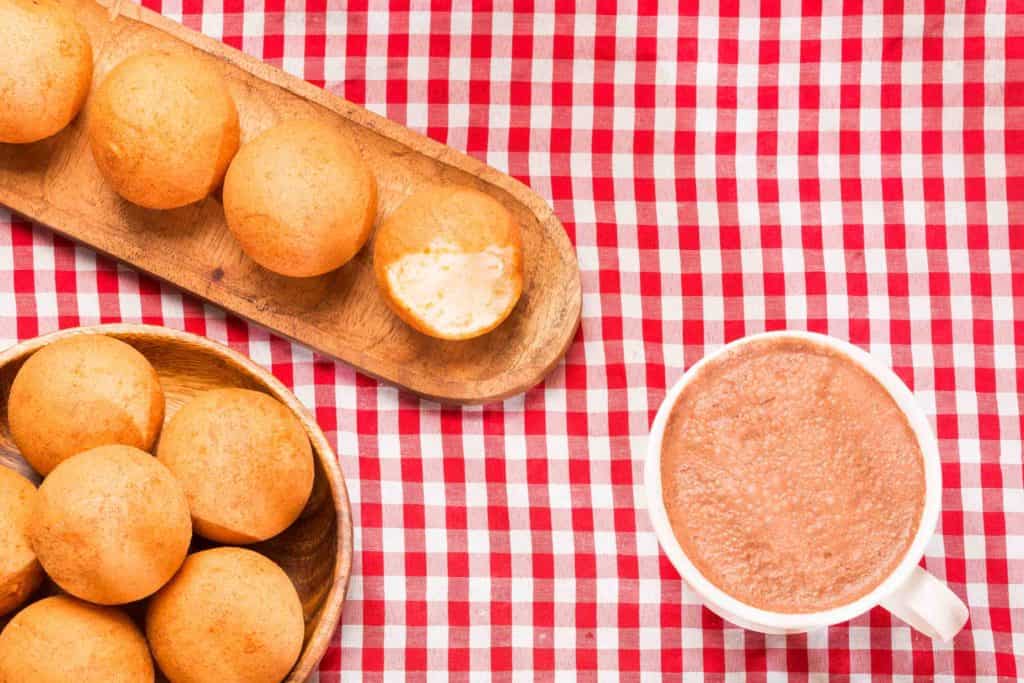
4. Buñuelos
While buñuelos are a traditional Colombian Christmas sweet, they can be enjoyed throughout the year.
They are best served alongside a coffee or hot chocolate and are a wonderful combination of sweet and salty.
Unlike other the Honduran desserts known as buñuelos in Latin America, they are not sweet and like doughnuts in Colombia.
The base of the fritters is made from yuca flour, corn starch, and cheese. They are then fried to give them a crispy outer shell while staying soft on the inside.
They are traditionally made with queso costeño which is slightly saltier than queso fresco.
This yuca cheese combination is also one of the tastiest Nicaraguan desserts.
Colombian Breakfast Foods
5. Brevas con Arequipe
Nothing quite says Colombian dessert than brevas con Arequipe.
These delicious Colombian figs are stuffed with arequipe and are the prefect after dinner delight or quick sweet snack.
They can also be made ahead of the time, and it is common that Colombian households have a jar of them on the shelf.
While brevas con arequipe is a rather simple dish, it’s not short of flavor and packs a punch.
A common way to serve them is with some queso fresco on the side for a delicious creamy accompaniment.
.6. Cholado or Raspado / Raspao
Colombian cholado is one of the somewhat hybrid Colombian desserts – a mix of a drink, a fruit cocktail, and a frozen dessert.
It is essentially a raspado, which is a shaved ice dessert, that is topped with fresh fruit and juice.
Cholados are incredibly refreshing and the combination of fresh fruit and shaved ice is great for a hot day.
There is often condensed milk thrown into the mix for a bit of added sweetness and decadence.
Common fruit combinations to top off the cholados include mango, pineapple, strawberry, and bananas. But the sky is the limit.
Any fruit combination will work, and it depends on personal preference.
.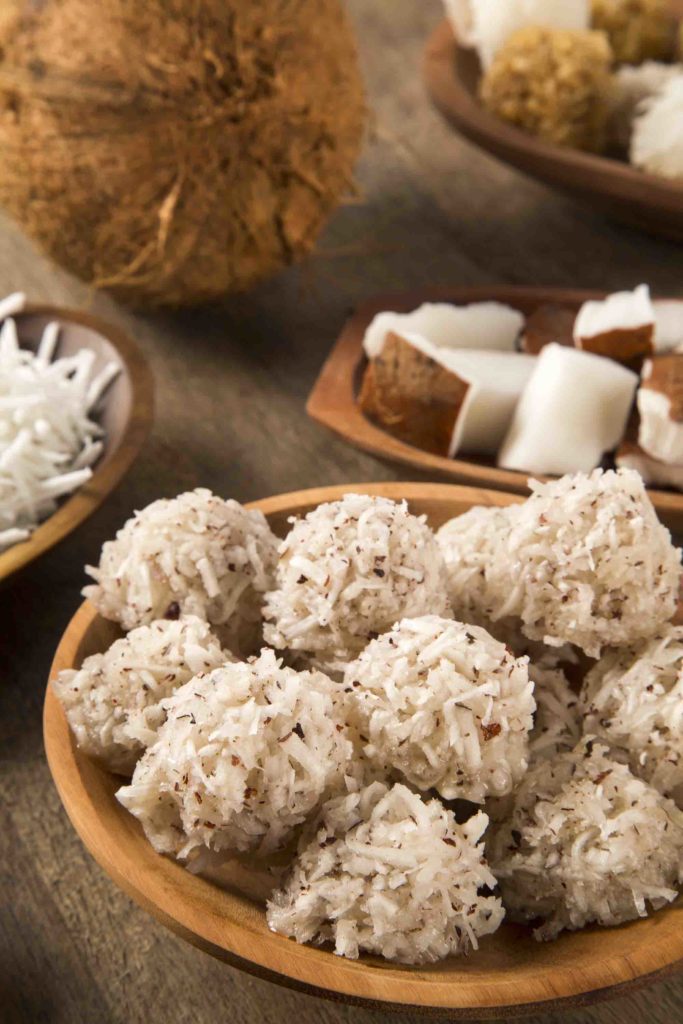
7. Cocadas
Cocadas are one of the most well-known Colombian sweets – a dessert made up primarily of coconut and sugar.
You will find cocadas being sold by street vendors and around the beaches on the Colombian coastline
There are also a number of different variations, depending on the region you find yourself in along the coast.
Cocadas de arequipe is a popular version of the sweet, sticky dessert – it is mixed with the Colombian version of dulce de leche, arequipe and formed into little bars or balls.
Traditional Colombian Food
8. Cuajada con Melao
Cuajada con melao dates back to the Spanish colonial days in Colombia – a dessert made from curdled milk as the base.
The version we’re talking about here originates from the Altiplano Cundiboyacense region in Colombia and uses melao.
Melao is a deliciously sweet syrup made with brown sugar, cinnamon, and water that compliments the flavors of the curdled milk.
While the dish itself is rather simple, made up of slices of curdled milk and the syrup, it delicious. The curdled milk flavor is offset by the sweetness and subtle spiciness of the syrup – a match made in heaven.
.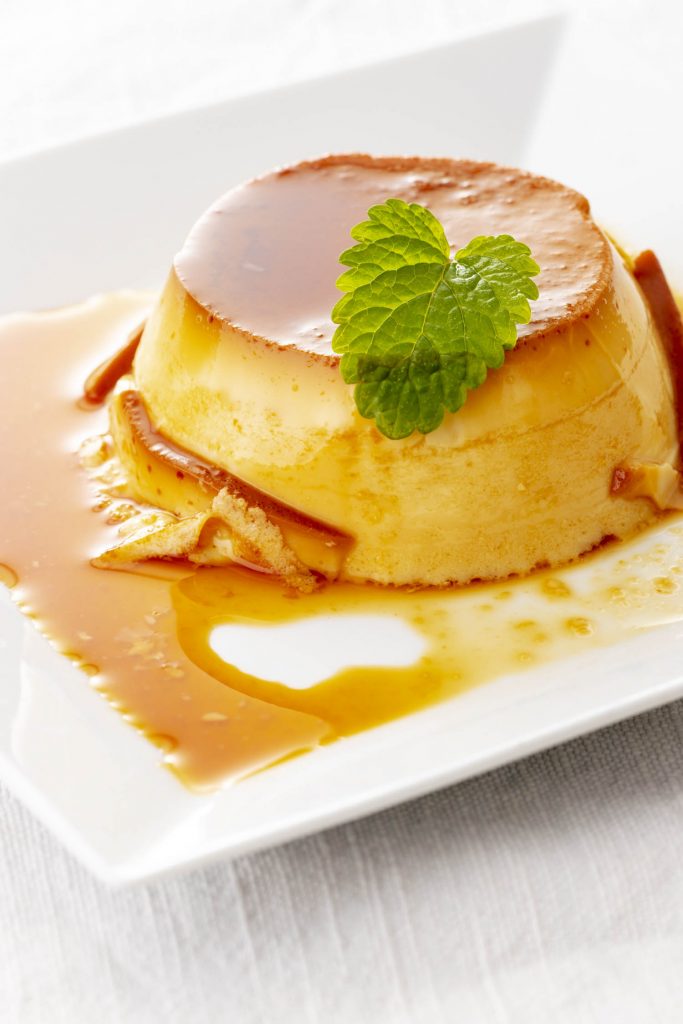
9. Flan
You’ve probably heard of the term flan in your life – a dessert that has its roots firmly placed in Europe.
The Colombian version, called flan de leche, is similar in appearance to the European relative. It is a type of egg-based custard dessert and the name itself translates roughly to “flat cake”.
The Colombians have many different variations of the flan including coffee (of course), mango, and pineapple.
These are only a few of the most common variations – they can be combined with almost anything, as the Colombians do.
Cuban Flan
10. Leche Asada
Leche asada is one of the Colombian desserts that people are obsessed with – and rightly so.
It is a type of milk custard that is, in fact, similar to a flan – the difference comes in in the cooking process.
While a flan is generally baked in a water bath inside the oven to give it a smooth texture, leche asada is not.
It is baked directly in the oven.
While the leche asada has two milk products in it, milk and condensed milk, some Colombians like to add a third milk product to the dish.
When heavy cream is added, the name is changed to tres leches.
The cream gives the dessert a richer and creamier texture and helps to thicken it up a bit.
.11. Merengón
Merengón is essentially the Colombian version of a pavlova.
It is made up of layers of meringue that are filled with whipped cream and fruit. The most common fruit being guanabana, or soursop as it is known as in the west.
Strawberries are another common fruit that is added to the merengón, giving it the name merengón de fresas.
Peaches and Colombian blackberries, or mora as they are known locally, are also regularly used in the dish.
Salpicon de frutas is a type of fruit cocktail that is made using fresh fruit that is topped with ice cream or condensed milk.
Colombian Slang
12. Salpicon de Frutas
Like many of the Colombian sweets and desserts, there are many variations that all use a different fruit.
There is no right or wrong way to make the refreshing fruit cocktail dessert.
A popular variation of the fruit cocktail is known as Salpicon de frutas Colombiano.
This version uses a variety of fresh fruit and it then topped off using Colombina, which is a traditional Colombian soda.
.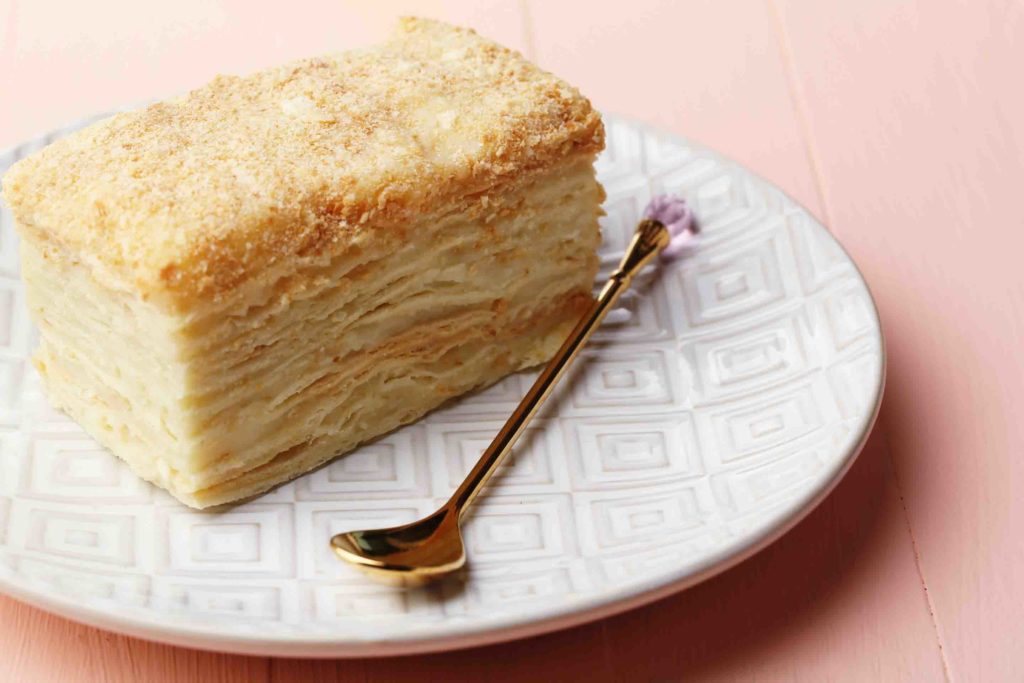
13. Milhojas
Milhojas is one of the favorite Colombian desserts but is also incredibly popular in the rest of Latin America.
The name itself translate to “thousand leaves” which makes complete sense – it is made using layered puff pastry.
The layers of puff pastry are filled with whipped cream and topped with arequipe.
You may know it as the French dessert called millefeuille.
Drinks in Colombia
14. Natilla
Originally from Spain, most Latin America countries have some kind of custard dessert made with milk and eggs.
It is a type of sweet, set custard that is flavored with panela and a hint of cinnamon. And while most countries use egg, what makes this Colombia dessert so special is that it does not.
Again, there are many variations of the dish throughout the country, but a common method of preparation is to add a bit of aguardiente.
This gives a warm, anise flavor to the dish and compliments the cinnamon beautifully.
While natilla is one of the desserts in Colombia that is traditionally served around Christmas in Colombia it’s not limited to the December period only.
.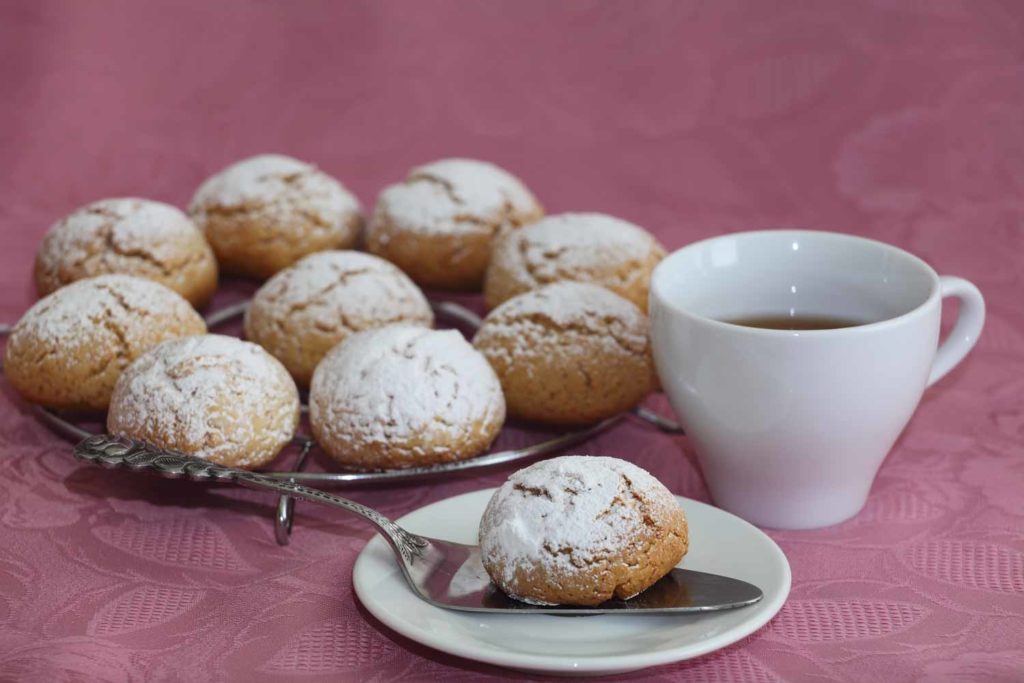
15. Polvorosas
Polvorosas are delicious little sugar and butter-based cookies. They are simple to make and a firm favorite amongst the children – both to make and to eat, of course.
They are quite rustic in a sense as they don’t require a cookie cutter.
Polvorosas are traditionally served with a glass of milk for the kids but the adults often enjoy a cup of coffee to go with them.
They ae also one of the most popular Guatemalan desserts.
16. Postre de Natas
Postre de natas are not to be confused with the Portuguese egg custard called pasteis de nata. They are two very different dishes.
The Colombian dessert is made by boiling milk several time and removing the cream layer that results.
This cream is collected in a separate pot until there is sufficient to mix with raisins, syrup, and eggs.
The mixture is then simmered on the stovetop until thickened and then transferred to separate individual plates to cool.
Some Colombians also add a bit of rum to the dish for an additional kick.
.17. Torta Negra
Torta Negra is essentially a type of fruit cake made with raisins and figs, that is then soaked with a wine and rum mixture.
It may appear similar to a fruit cake, but is actually more similar to a Jamaican black cake as the whole dried fruit aren’t left in tact but instead macerated and pulverized.
After the base cake has been baked, it is dosed with the alcohols and then wrapped and left to sit for at least a few days to infuse.
They are one of the traditional Colombian desserts that are served at special occasions such as weddings, anniversaries, birthdays and Christmas.
. ‘18. Enyucado
Enyucado is one of the Colombian desserts that uses shredded cassava or yuca as the base ingredient.
It is mixed with coconut, star anise, and cheese and is then baked in the oven.
Enyucado is traditionally a sweet treat, it’s common to add a drizzle of condensed milk to take it to the next level.
It is commonly served on the Atlantic coastline of Colombia.
.19. Torta Maria Luisa
Torta Maria Luisa is a traditional Colombian sponge cake that is similar to a Victorian sponge cake
.The cake base is soaked in orange juice and filled with a berry marmalade.
It can be filled with any jam or marmalade and there are many variations of the cake.
It is even sometimes filled with the Colombian arequipe caramel which gives it a certain decadence.
Colombian Street Food
20. Obleas
Obleas are one of the Colombian sweets that you will find being sold by street vendors.
These large, round, and crispy wafers are perfect sweet snack they usually come with arequipe spread on them.
They can also come with a variety of other toppings such as fruit, jam, or cheese.
.21. Tres Leches
Torta de tres leches, or three milk cake as it’s directly translated, gets its name from the three milk products used to make it.
Recipes use condensed milk, regular evaporated milk, and heavy cream as part of the base.
As a result of the three milks used to soak the cake, it is deliciously moist.
It is usually iced afterwards using a whipped cream frosting to finish off the traditional Colombian dessert.
It is also one of the most popular Cinco de Mayo desserts in Mexico.
.22. Roscón
Roscón is a ring-shaped dessert that is traditionally filled with a type of guava paste called bocadillo or arequipe.
Colombian sweet rolls are used as a base and filled with the bocadillo.
They are then placed end-to-end and shaped into a ring formation. This base is then baked until crispy and golden brown.
It’s very similar to the Mexican roscón de reyes or King’s Cake celebrated in Latin America as they are both sweet bread rings with fillings.
23. Solteritas
Solteritas, which would be roughly translated as “young single ladies,” are a type of cookie that can be found in Colombia.
Also known as rosettes, they are sweet and crunchy and are almost always served with a sweet cream to accompany them.
This sweet cream is the same color as the cookies – a somewhat off-orange color.
While solteritas can be found throughout Colombia, they are commonly sold outside schools and in the neighborhood parks by street vendors.
A small, iron mold is used to make the rosettes and ensure that the shapes are kept consistent.
Once cooked, the rosettes are topped with the cream and the drizzled with condensed milk.
